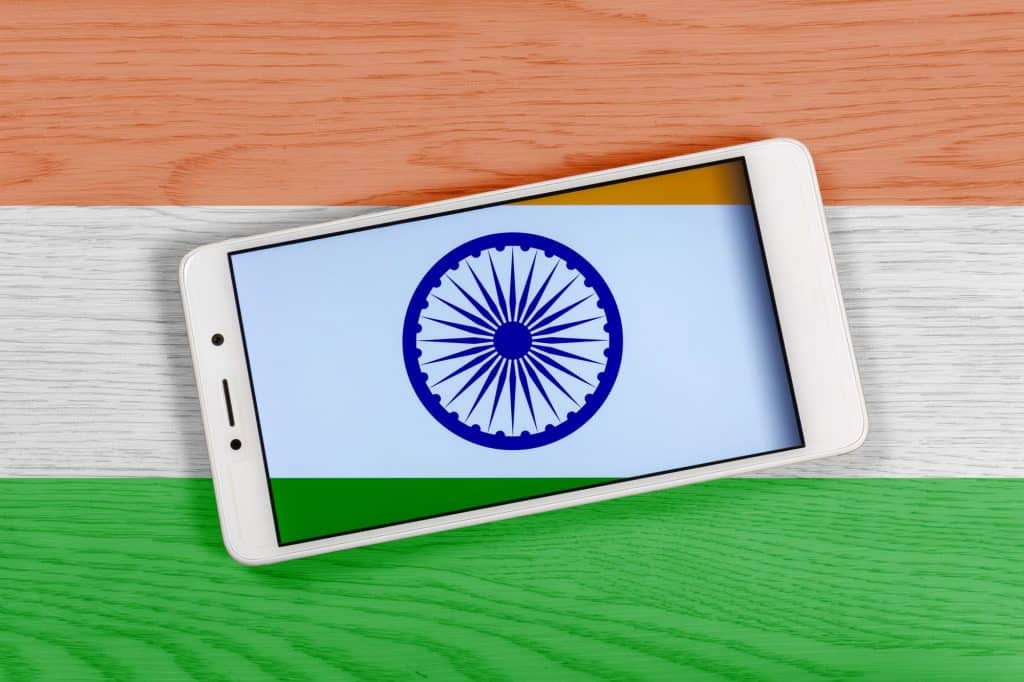
The iPhone 12 lineup has generated impressive sales for Apple (NASDAQ:AAPL), and the company is expected to raise production significantly in 2021 to meet the strong demand for its 5G-enabled offerings. That’s not surprising, as Apple had a huge installed base of users ready to upgrade to 5G-capable smartphones — and the company gave them a great reason to make the jump with the well-priced iPhone 12 lineup.
Perhaps more importantly, the iPhone 12 could help Apple push the envelope in India, an important market where it has traditionally struggled. Let’s see how.
Fifth-generation smartphones are about to take off in India
Apple has struggled to corner a substantial market share in India because of its premium pricing. It reportedly held just 2% of the Indian smartphone market at the end of 2019, despite recording a 41% spike in shipments during the year. The good part is that Apple built on its 2019 success in India, and is estimated to have shipped 2.5 million iPhones in 2020, making it the company’s best year in the country since 2017.
But that still doesn’t make Apple a dominant player in India, as overall smartphone shipments there stood at 150.2 million in 2020, as per Canalys. However, 2021 could turn out to be a much better year for the California-based company thanks to a sharp spike in 5G smartphone shipments in India.
Counterpoint Research predicts that India’s 5G smartphone shipments could grow more than nine-fold in 2021 to 38 million units, up from an estimated 4 million last year. Apple is in a solid position to tap into this massive jump.
Apple could get a nice lift
The 5G-enabled iPhone 12 mini sits in one of the country’s fastest-growing smartphone segments: devices priced at $500 and above. Originally priced at 69,900 rupees (roughly $960 at the current exchange rate), the iPhone 12 mini can be bought for 47,900 rupees (around $660) from Apple’s online store in India after trade-in and other offers. This renders Apple’s phone roughly on par with other entry-level 5G flagship smartphone offerings in the country.
The OnePlus 8T 5G, for instance, retails for 42,999 rupees in India. The more expensive OnePlus 8 Pro carries a price tag of 54,999 rupees, which puts it close to the iPhone 12’s post-trade-in price tag of 57,900. What’s more, Apple is expected to start offering made-in-India iPhone 12 units from next month, a move that could help the company reduce prices substantially and make its 5G phones cheaper than those of rivals after trade-ins and discounts.
The demand for premium smartphones in India (meaning those priced at more than $500) shot up 91% year over year in the third quarter of 2020, according to IDC. Apple is one of the leading players in this segment, with its market share of premium smartphones hovering around 50% in 2020.
A closer look at the list of 5G smartphones on sale in India suggests that most of the devices are priced above the 30,000-rupee mark (around $411), barring a few entry-level devices. So Apple could see a significant jump in smartphone shipments in India this year if it continues to hold on to its market share in the premium segment.
Meanwhile, there are rumors of Apple putting 5G connectivity into its entry-level iPhone SE this year. Supply chain gossip indicates that the next iteration of the iPhone SE could rock the same A14 Bionic processor that powers the iPhone 12, and it could be launched in the second half of the year. Apple will have a better chance of cornering a bigger share of the 5G smartphone space in India if it manages to bring out a $400 5G-enabled iPhone SE.
All in all, it wouldn’t be surprising to see Apple’s iPhone sales take off in India this year and help the company climb the market share rankings. More importantly, Apple could win big from India’s 5G smartphone market in the long run, as shipments are expected to hit 144 million units by 2025 as per a third-party report — making it a top stock that investors can buy to take advantage of India’s nascent 5G market.